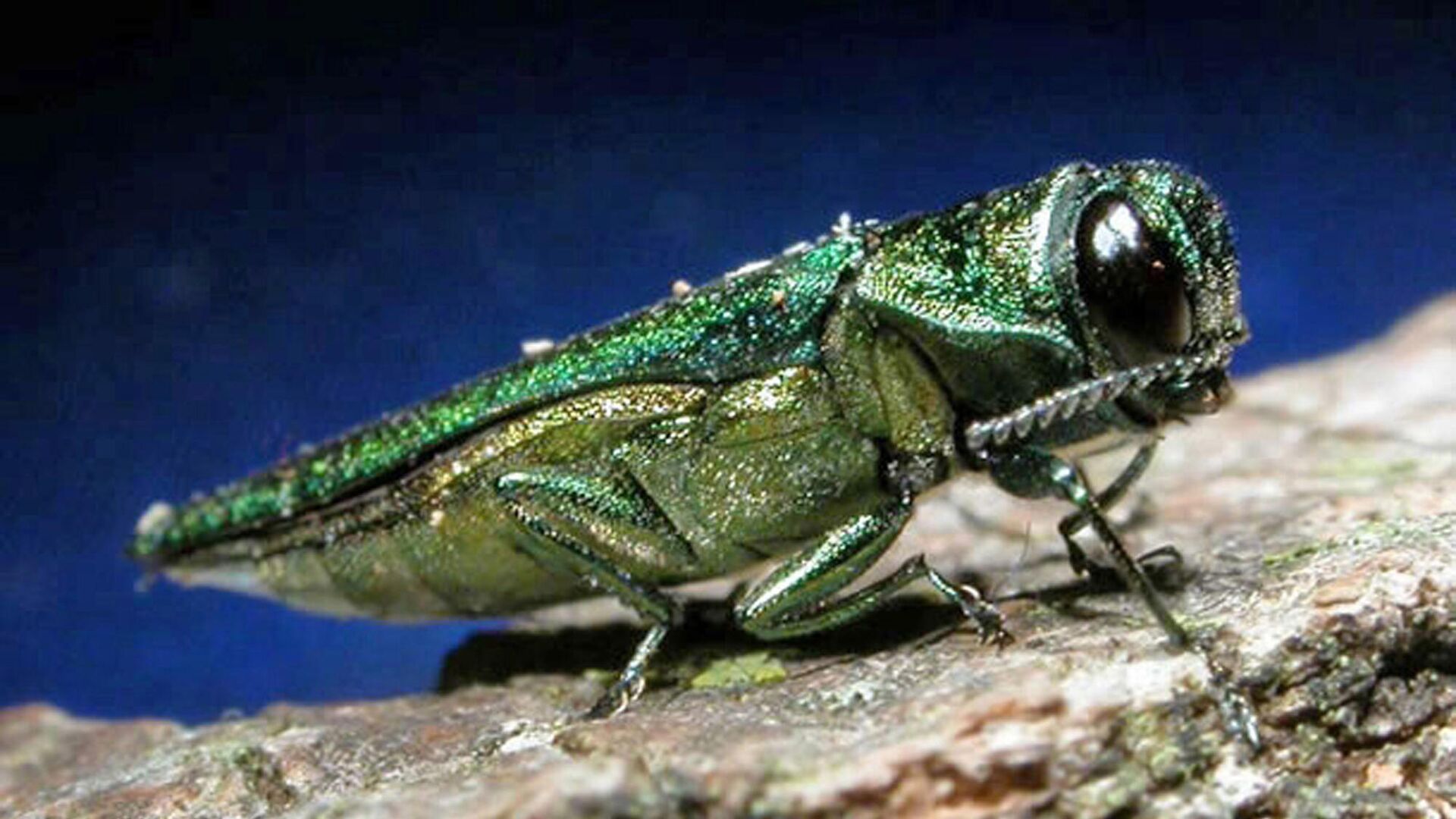Invasive Insects May Kill 1.4 Million Urban Trees in US by 2050, Study Says
22:37 GMT 14.03.2022 (Updated: 21:07 GMT 19.10.2022)

© AP Photo / Minnesota Department of Natural Resources
Subscribe
Per the survey, approximately 82% of the US population lives in urban environments where trees are at high risk of mortality from insect pests. With the number of Americans in urban areas rising, researchers have become more focused on preserving street trees, as the plants provide many benefits, including improved air quality and cooling.
Between 2020 and 2050, an estimated 1.4 million urban trees will be killed by invasive insects, and communities will see some $900 million in associated costs, according to a first-of-its-kind study published on Sunday by the British Ecological Society.
Within the survey, researchers from McGill University, as well as the US Department of Agriculture’s Forest Service Southern Research Station and North Carolina State University, found that 90% of the 1.4 million tree deaths are projected to be caused by the emerald ash borer.
By mid-century, the emerald ash borer—a green buprestid or jewel beetle native to the northeast region of Asia—is expected to kill every ash tree in more than 6,000 urban areas, researchers believe.
“These results can hopefully provide a cautionary tale against planting a single species of tree throughout entire cities, as has been done with ash trees in North America,” said study lead Dr Emma Hudgins, of McGill University.
To examine the threat of invasive insects, researchers combined four models: the street tree populations in 30,000 communities; the predicted spread of 57 insect species; the insects’ deadliness/impact on various tree species; and the costs associated with the removal and replacement of dead trees.
Hudgins emphasized that expanding the diversity of street trees boosts resilience against pest infestations.
“While we know this more intuitively for monocultures of crops, many cities continue to plant what are essentially monoculture urban forests,” Dr. Hudgins added.
The study is the first nationwide spatial forecast of street tree mortality due to invasive insects.
Street trees notably provide multiple benefits for their urban environments, including improved air quality, carbon capture, the cooling of streets and pedestrian walkways, and measurable improvements in the mental and physical health of humans.
Asian wood-boring insects, such as the citrus long-horned beetle, are believed to pose the highest threat to urban trees, according to the research. New establishments of these insects could potentially cost $4.9 million over a 30-year period.
“This paper shows that unless we plant a variety of tree species in our cities, urban trees are seriously at risk from invasive pests,” said University of Bristol professor Jane Memmott, who was not involved in the study. “The take home message to urban planners, is to plant multiple species in cities rather than focus on just a few familiar species; It’ll keep trees wonderful, and it will keep them in our cities.”
Researchers determined that 95% of tree mortalities will occur in 25% of urban areas—with hotspots in New York City, New York, Chicago, Illinois, and Milwaukee, Wisconsin—where conditions allow for the invasive species to spread.
